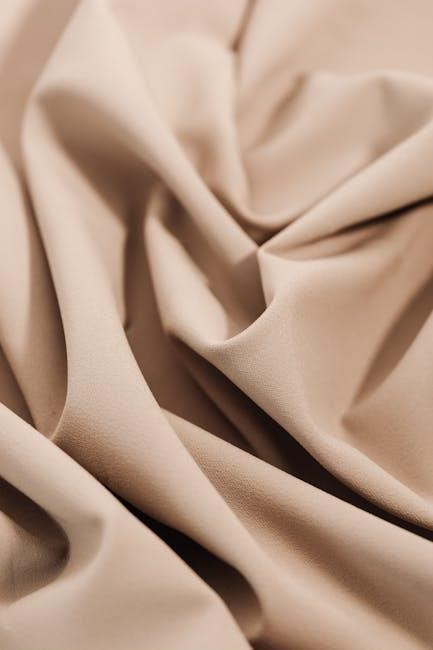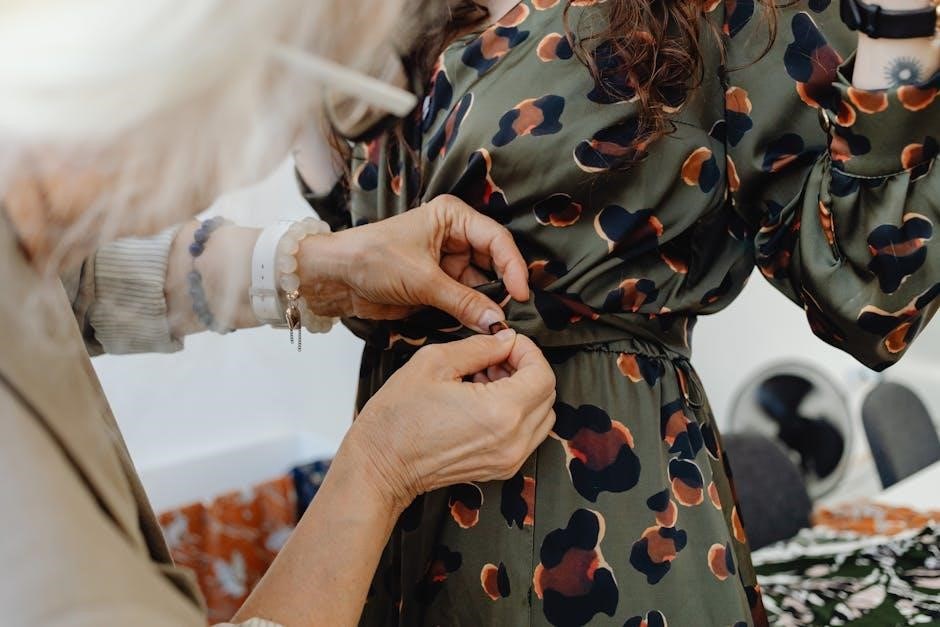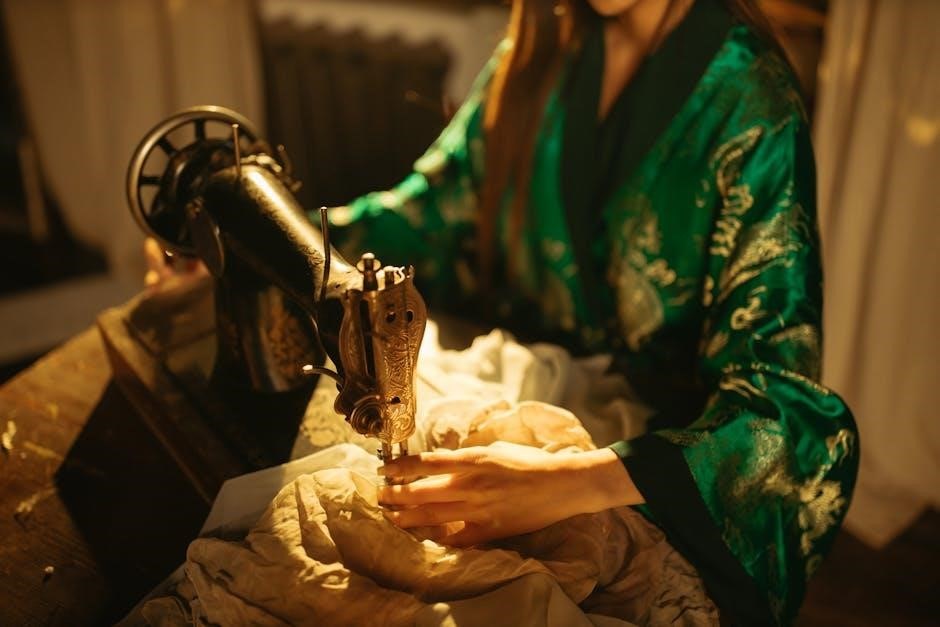Tailoring is a valuable profession in World of Warcraft, allowing players to craft cloth armor and items. This guide provides efficient methods to reach max level, helping you create essential gear, improve your character, and potentially earn gold. Perfect for new players and experienced crafters, it covers strategies for various expansions, ensuring you master Tailoring effectively.

Overview of Tailoring in World of Warcraft
Tailoring is a versatile profession in World of Warcraft, enabling players to craft cloth armor, bags, and other essential items. It is particularly useful for classes like Mages, Priests, and Warlocks, who rely heavily on cloth gear. Tailoring allows players to create their own equipment, reducing reliance on drops or vendors. The profession is accessible across all expansions, from Classic to modern, making it a consistent and valuable skill. By mastering Tailoring, players can craft high-quality gear, enhance their characters’ performance, and even earn gold through the in-game auction house. It pairs well with Enchanting for utilizing leftover materials.
Materials and Tools Required for Tailoring
Essential materials include various cloths, threads, and patterns. Tailors also need sewing kits and looms for crafting. These tools ensure efficient and high-quality item creation.
Essential Cloth and Reagents for Crafting

Crafting in Tailoring requires specific cloths and reagents. Linen Cloth, Wool Cloth, and Silk Cloth are foundational materials for early crafting. Higher-level items demand rare cloths like Mageweave and Runecloth. Threads and dyes are also necessary for enhancing item quality. These materials can be obtained from enemy drops, vendors, or through other professions like Enchanting. Ensuring a steady supply of these resources is crucial for efficient crafting and progression. Proper material management helps minimize costs and maximize crafting efficiency, especially when focusing on high-demand items for gold-making or character progression.
Leveling Tailoring from 1 to 100
Start by gathering essential materials like linen and wool cloth, which can be obtained from enemies or vendors. Learn basic patterns from trainers to craft items like bandages and tunics, which provide skill points. As you progress, switch to higher-level cloths like silk and mageweave. Opt for patterns that offer the best skill point returns, such as crafting multiple bolts of cloth early on. Specialize in Mooncloth, Shadoweave, or Spellfire based on your playstyle for advanced crafting. Regularly check the auction house to sell surplus items for gold, ensuring a steady income while leveling.

Step-by-Step Guide to Reaching Skill Level 100
Begin by crafting bolts of linen cloth and simple items like bandages to reach skill level 50. Progress to woolen cloth, creating tunics and gloves for steady skill gains. At level 75, switch to silk cloth, crafting robes and headpieces for higher returns. Use mageweave cloth at level 90 to make pants and belts, ensuring skill growth. Finally, craft mooncloth or shadoweave items to reach 100. Always prioritize patterns offering the most skill points per craft and sell surplus items on the auction house to fund your progression.
Trainers and Locations
Trainers are located in major cities like Stormwind and Orgrimmar. They are typically found in capital cities, making it easy to find them for skill training.

Where to Find Tailoring Trainers in Azeroth
Tailoring trainers are conveniently located in major cities across Azeroth, including Stormwind, Orgrimmar, Ironforge, and Darnassus. For Alliance, visit Stormwind’s crafting district or Darnassus’ trade area. Horde players can find trainers in Orgrimmar’s Valley of Strength or Undercity’s Magic Quarter. In Ironforge, trainers reside near the Auction House. Additionally, during expansions like The Burning Crusade, trainers can be found in hubs such as Shattrath. Utilize in-game maps or ask fellow players for precise locations to efficiently locate these trainers and advance your Tailoring skills.
Tailoring Specializations
Tailoring offers three specializations: Mooncloth, Shadoweave, and Spellfire. Each caters to different playstyles, such as PvE or PvP, and enhances crafting efficiency for specific roles. Choosing the right one can improve gear creation for healers, DPS, or tanks, and may increase profitability when crafting in-demand items.
Choosing the Best Specialization for Your Playstyle
Tailoring specializations—Mooncloth, Shadoweave, and Spellfire—offer unique benefits tailored to specific playstyles. Mooncloth excels for healers and casters, providing spell damage and mana regeneration. Shadoweave boosts stamina and agility, ideal for tanks and PvP. Spellfire enhances fire resistance, perfect for raiders facing fire-based threats. Each specialization improves crafting efficiency for niche roles, ensuring optimal gear creation. Players should consider their class, content focus, and market demand to select the most profitable and gameplay-enhancing path. This choice significantly impacts both in-game performance and gold-making potential, making it a crucial decision for any tailor.

Optimizing Your Tailoring Leveling Process
Use crafting orders and focus on high-demand items to accelerate leveling. Prioritize materials with high vendor prices for efficient crafting and profit. This optimizes progress and resource use.
Efficient Crafting Patterns and Material Management
Focus on crafting high-demand items like cloaks, gloves, and robes to maximize skill gains and gold. Use vendor prices to identify profitable materials. Organize your inventory by category and bulk-craft items to reduce crafting time. Prioritize patterns with high sell-through rates to minimize waste. Rotate between cloth types to maintain material diversity. Utilize crafting orders for consistent progress. Regularly check market trends to adjust your crafting focus. This approach ensures efficient leveling and resource management, helping you reach max skill quickly while maintaining profitability.


Making Gold with Tailoring
Craft high-demand items like cloaks, gloves, and robes to maximize earnings. Focus on market trends and use vendor prices to identify profitable patterns. Sell crafted gear strategically to increase gold income while leveling your skill. This approach ensures consistent profit and efficient progression in World of Warcraft.
Profitable Crafting Patterns and Market Trends
Focus on crafting high-demand items like cloaks, gloves, and robes, which consistently sell well. Analyze market trends to identify profitable patterns, especially during raid and dungeon peaks. Use vendor prices to determine material costs and optimize crafting efficiency. Rare recipes and seasonal demands can significantly boost profits. Keep an eye on server economics, as supply and demand vary. Timing your auctions during high-traffic periods, like weekends or raid nights, can maximize earnings. Diversify your crafting to cater to different player needs, ensuring a steady flow of gold throughout your Tailoring journey in World of Warcraft.

Tailoring in Different Expansions
Tailoring varies across expansions like Classic, The Burning Crusade, and Dragonflight, offering unique recipes and level caps. Each expansion introduces new patterns and challenges for crafters.
Leveling Strategies for Classic, The Burning Crusade, and Modern Expansions
In Classic WoW, leveling Tailoring involves crafting large quantities of cloth items like bandages and bolts of cloth. The Burning Crusade introduces Outland-specific materials, requiring players to gather Felcloth and other rare fabrics. Modern expansions, such as Dragonflight, simplify leveling with streamlined recipes and higher item-level gear. Each expansion offers unique challenges, with Dragonflight emphasizing high-level crafting and rare recipes. Players must adapt to material availability and crafting patterns specific to each era. Efficient use of vendors and crafting orders can significantly speed up the leveling process across all expansions, ensuring a smooth progression for crafters.

Advanced Tailoring Techniques
Mastering high-level Tailoring involves crafting intricate patterns and rare recipes. Focus on optimizing material usage and experimenting with unique fabric combinations to create exceptional gear and items.
Mastering High-Level Crafting and Rare Recipes
Advanced Tailoring techniques involve crafting high-level items and rare recipes, which require precision and quality materials. To master these, focus on optimizing your material usage and experimenting with unique fabric combinations. Crafting orders can help you achieve skill points beyond basic recipes. Rare patterns often drop from dungeons or are sold by specific vendors, so keep an eye on market trends. High-level crafting not only enhances your skill but also allows you to create top-tier gear and items in high demand. Regularly farming rare materials and maintaining a well-stocked inventory will ensure you can craft efficiently and effectively.
Mastering Tailoring requires patience and strategy. Always use materials wisely and stay updated with market trends to maximize your crafting efficiency and success.
Maximizing Your Tailoring Skill and Enjoying the Game
To truly excel at Tailoring, stay organized with your materials and prioritize high-demand patterns. Experiment with new recipes to keep the process engaging and rewarding. Joining a guild or community can also provide valuable tips and resources. Regularly check market trends to capitalize on profitable items, ensuring your efforts translate into gold. Most importantly, enjoy the creative aspect of crafting and the satisfaction of equipping your character or helping others. Balancing efficiency with fun will make your Tailoring journey both productive and enjoyable in World of Warcraft.

Be First to Comment